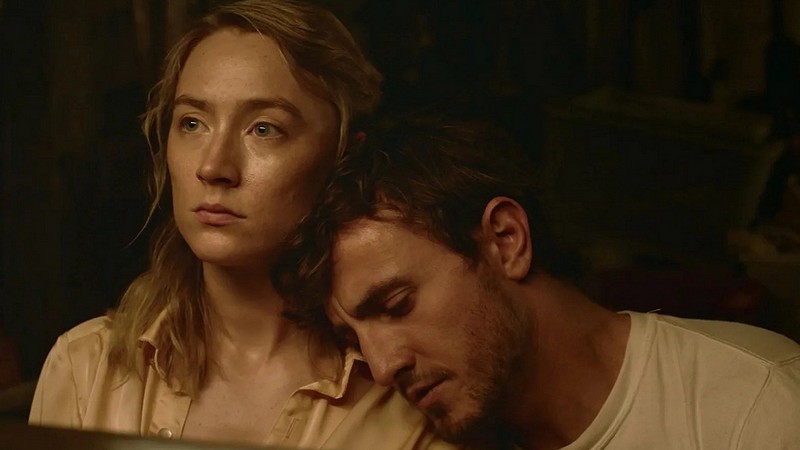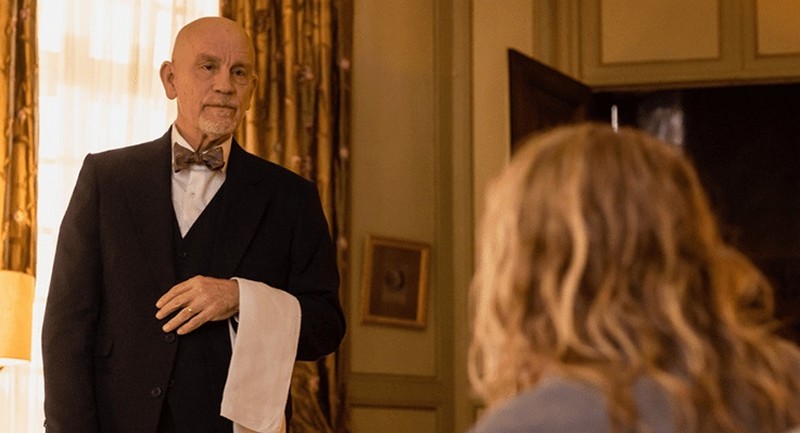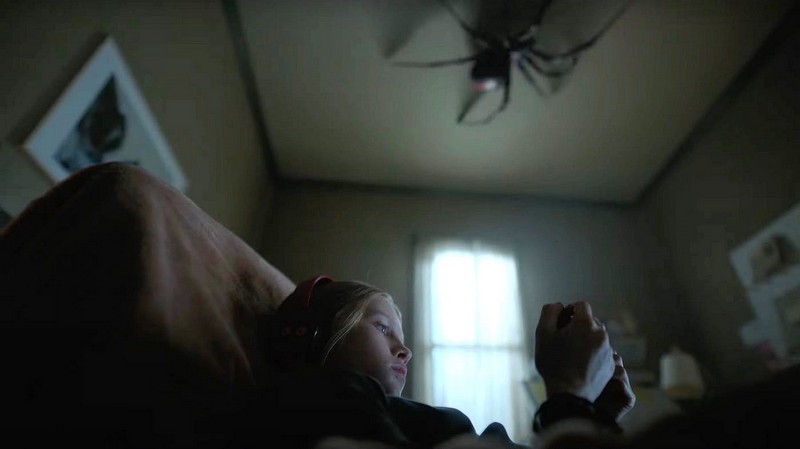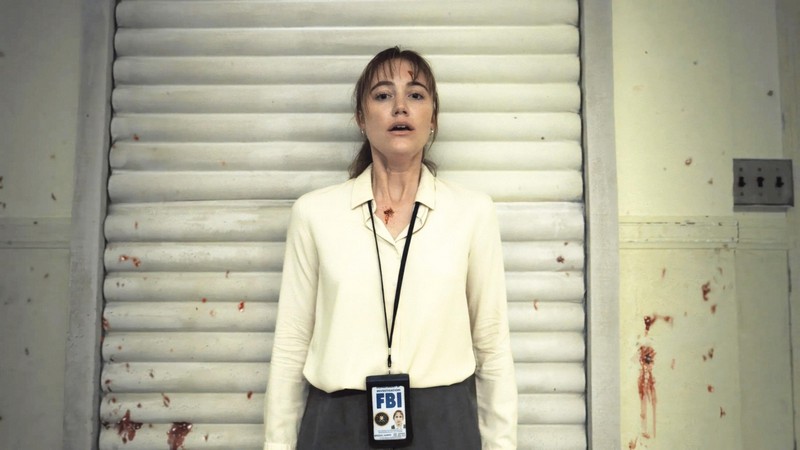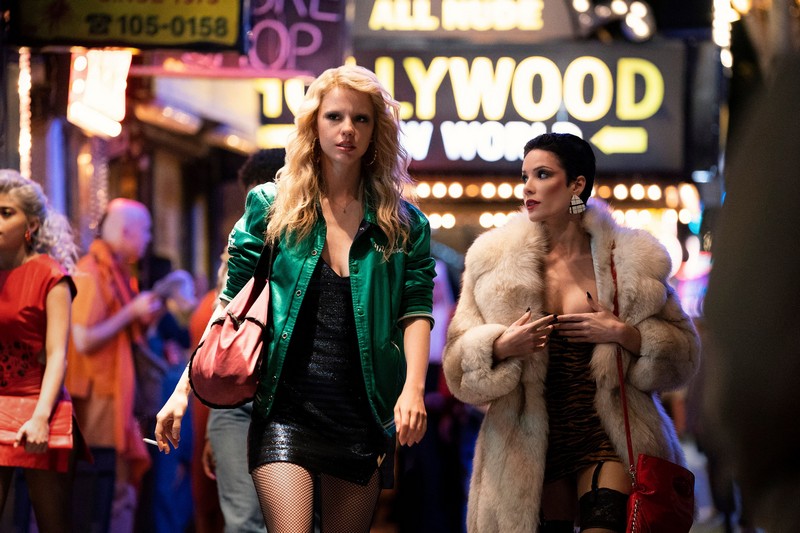AI is a hot topic right now, so it’s only natural filmmakers would want to explore it. One of them is Garth Davis (Lion), who adopts a measured but sometimes oblique approach in Foe.
Davis is clearly passionate about the project, having worked with novelist Iain Reid to adapt Reid’s novel of the same name for the screen. Incidentally, Reid’s 2016 novel I’m Thinking of Ending Things was also made into a movie. And if you saw that Charlie Kaufman-directed film, you might have a sense of where this one is heading.

Foe is basically a three-hander. Married couple Hen (Saoirse Ronan) and Junior (Paul Mescal) live on a “farm” somewhere in the Midwest. It’s the near future, and climate change has devastated the landscape – so much so that apart from one carefully-tended tree, nothing much grows on the land anymore. So Junior has a job at an industrial chicken-processing plant nearby. Hen works shifts at a local diner. For long stretches though, it’s just the couple alone on their property. Then Terrance (Aaron Pierre) turns up. He’s from a nebulous organisation called OuterMore that’s trying to secure humanity’s future by building colonies in space. He informs the couple that Junior – and only Junior – has been selected to go off-world. Apparently, despite his rather menial job, they want “all sorts” in the colony to see how a society living in space will function. And they won’t take no for an answer. That would however leave Hen alone and vulnerable on the farm.
But Terrance has an answer for that too. OuterMore will provide Hen with an AI simulant of Junior – an artificial person if you will. The AI Junior will ensure life carries on much as before – although Terrance has to live with them for a while to make sure everything is up to scratch.
Davis and Reid swing for the fences here in terms of exploring big themes. At a grand level, the film questions what it is to be human. At a more intimate level, it looks at personal connections and how those connections can survive – even grow – in trying circumstances.
But despite being based on recent original work, Foe felt a bit stale to me. It has tendrils reaching back to Blade Runner (1982), and thus also to Blade Runner: 2049 (2017) – even the vehicles look similar. You could also throw in Steven Spielberg’s A.I.: Artificial Intelligence (2001) and Kogonada’s recent After Yang (2021), among others. So it’s basically all been done before, and I don’t know that Davis and Reid bring anything very new to the table here. It also has some script problems – mostly that the more you think about it, the less sense it makes. It also has pacing issues. The first two acts play out deliberately – even languidly. But after a major twist at the start of the third act, Davis has to cram so much in the rest of the film seems rushed.
The real star of Foe for me is cinematographer Mátyás Erdély (The Nest), who gives the film its amazing visuals. The interiors are like Caravaggio paintings, figures bathed in warm light emerging from inky darkness. The exteriors – noting the film was shot entirely in Australia – reveal a savage beauty.
Saoirse Ronan (Ammonite) is mesmerising as Hen. Her restrained performance lends the film real gravitas. She does a lot with a look or a carefully tossed word. Paul Mescal (Aftersun), by contrast, is called on to be more demonstrative as Junior. Later in the film he goes rather over-the-top, which I suspect was a directorial choice. Aaron Pierre (Old) is suitably unsettling as the corporate messenger. The dynamic between the three actors however sometimes gets out of kilter; so much so it’s like they’re acting in different movies.
Although it has many plusses, Foe doesn’t really come together as a cohesive film experience. A bit like AI in general, it can’t quite replicate the real thing.
David Edwards
Other reviews you might enjoy:

David Edwards is the editor of The Blurb and a contributor on film and television

